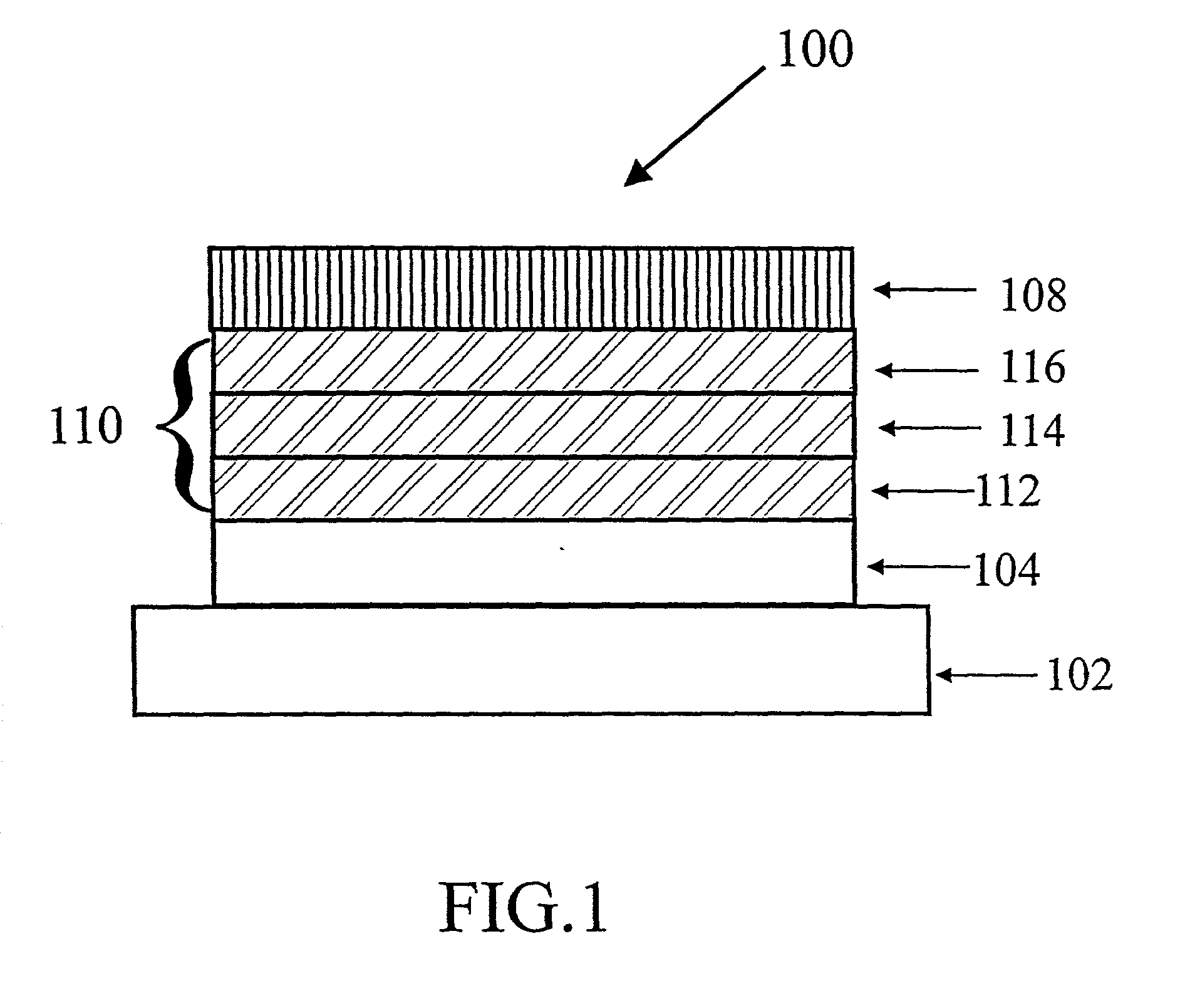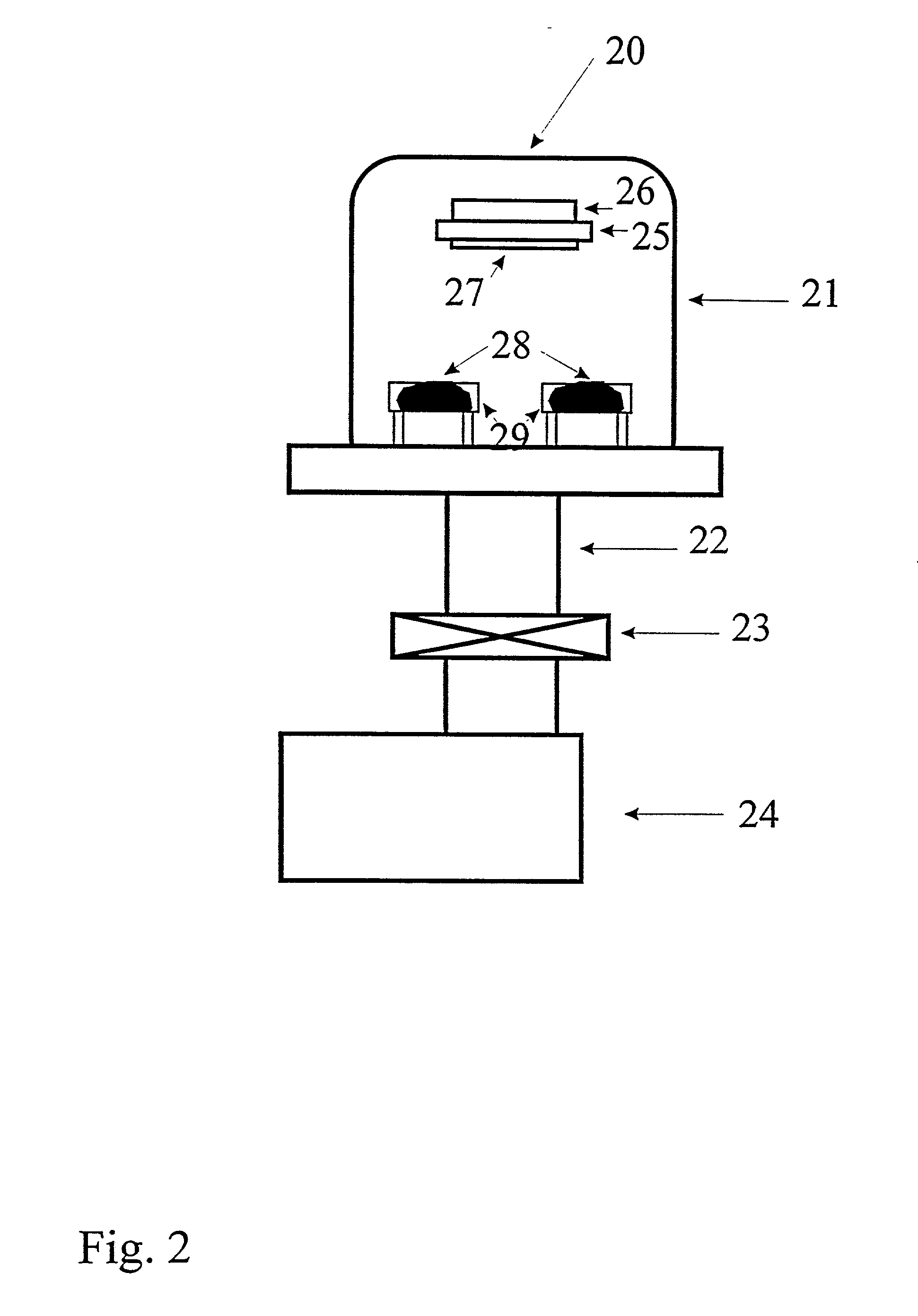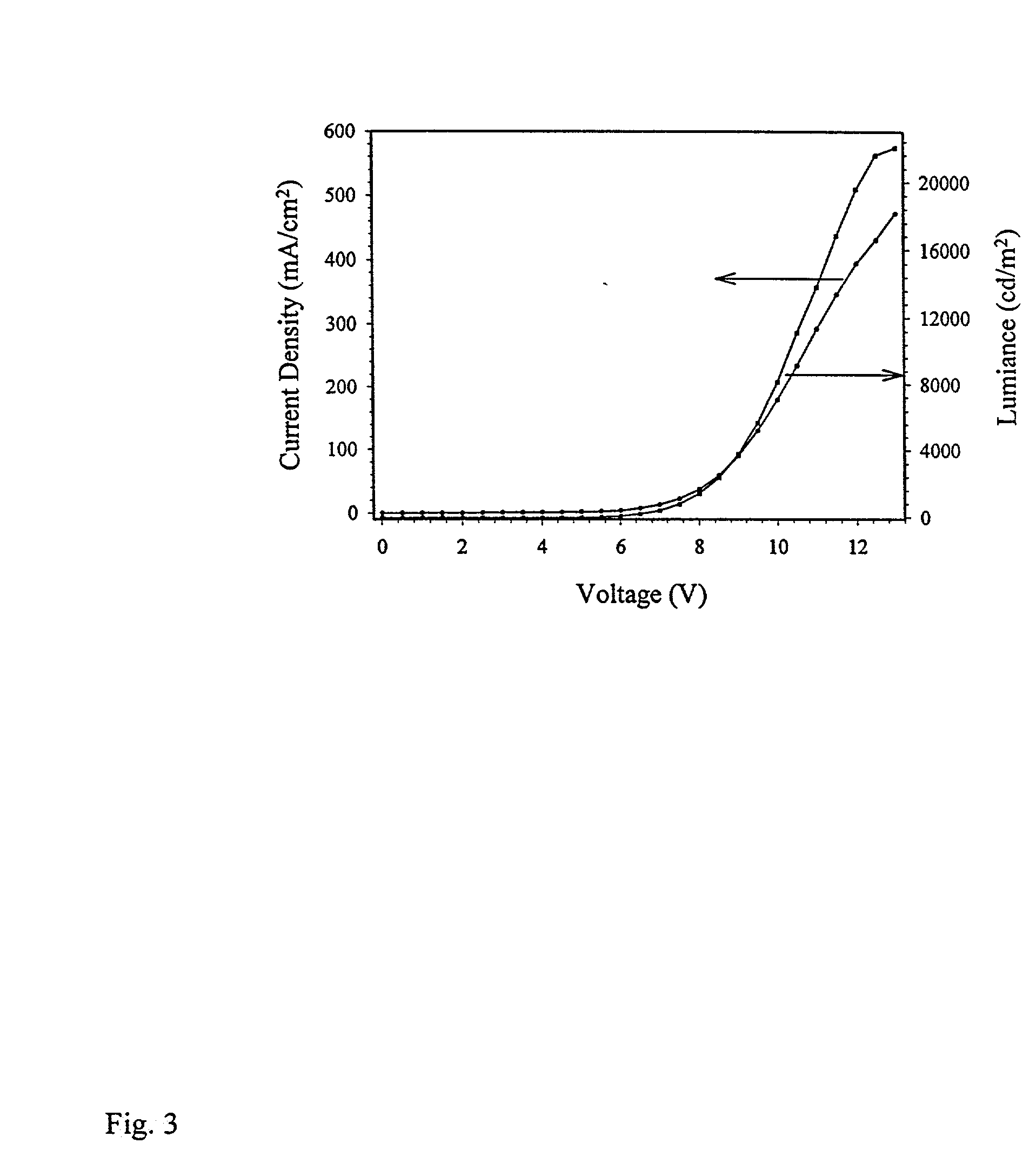Organic electroluminescent devices with organic layers deposited at elevated substrate temperatures
an electroluminescent device and organic technology, applied in the field of organic led, can solve the problems of difficult to synthesize a material having all the required properties, amorphous film, and presumably a large amount of defects, and achieve the effect of reducing device instability
- Summary
- Abstract
- Description
- Claims
- Application Information
AI Technical Summary
Benefits of technology
Problems solved by technology
Method used
Image
Examples
example 1
[0049] a) an ITO-coated glass was ultrasonicated sequentially in a commercial detergent, iso-propanol, ethanol, and methanol, rinsed in deionized water, and then dried in an oven. The substrate was further subjected to a UV-ozone treatment for 5-10 minutes.
[0050] b) the substrate was transferred into a deposition chamber from a loading chamber. Then the substrate was heated to 140.degree. C. and held at this temperature for more than 30 minutes before deposition.
[0051] c) a 80 nm thick NPB hole-transporting layer was deposited on the ITO layer at 140.degree. C.;
[0052] d) a 60 nm thick Alq electron-transporting and light-emitting layer was deposited on the NPB layer at 140.degree. C.;
[0053] e) a 200 nm thick MgAg layer was deposited on the Alq layer by co-evaporation from two sources (Mg and Ag) at about 70.degree. C.
[0054] The electrical and optical properties of the device were characterized. The threshold voltage (defined as the voltage at which the device emits light with a lumin...
example 2 (
prior art)
[0055] a) an ITO-coated glass was ultrasonicated sequentially in a commercial detergent, iso-propanol, ethanol, and methanol, rinsed in deionized water, and then dried in an oven. The substrate was further subjected to a UV- ozone treatment for 5-10 minutes.
[0056] b) the substrate was transferred into a deposition chamber from a loading chamber, and held at room temperature during deposition.
[0057] c) a 80 nm thick NPB hole-transporting layer was deposited on the ITO layer at room temperature;
[0058] d) a 60 nm thick Alq electron-transporting and light-emitting layer was deposited on the NPB layer at room temperature;
[0059] e) a 200 mn thick MgAg layer was deposited on the Alq layer by co-evaporation from two sources (Mg and Ag) at about room temperature.
[0060] The electrical and optical properties of the device were characterized. The threshold voltage was determined to be 3.6 V. The luminance at a current density of 20 mA / cm.sup.2 was 618 cd / m.sup.2, and the efficiency wa...
example 3
[0061] a) an ITO-coated glass was ultrasonicated sequentially in a commercial detergent, iso-propanol, ethanol, and methanol, rinsed in deionized water, and then dried in an oven. The substrate was further subjected to a UV- ozone treatment for 5-10 minutes.
[0062] b) the substrate was transferred into a deposition chamber from a loading chamber. Then the substrate was heated to 140.degree. C. and held at this temperature for more than 30 minutes before deposition.
[0063] c) a 80 nm thick NPB hole-transporting layer was deposited on the ITO layer at 140.degree. C.;
[0064] d) a 60 nm thick Alq electron-transporting and light-emitting layer was deposited on the NPB layer at room temperature;
[0065] e) a 200 nm thick MgAg layer was deposited on the Alq layer by co-evaporation from two sources (Mg and Ag) at about room temperature.
[0066] The electrical and optical properties of the device were characterized. The threshold voltage was determined to be 4.0 V. The luminance at a current densit...
PUM
| Property | Measurement | Unit |
|---|---|---|
| work function | aaaaa | aaaaa |
| work function | aaaaa | aaaaa |
| temperature | aaaaa | aaaaa |
Abstract
Description
Claims
Application Information
 Login to View More
Login to View More - R&D
- Intellectual Property
- Life Sciences
- Materials
- Tech Scout
- Unparalleled Data Quality
- Higher Quality Content
- 60% Fewer Hallucinations
Browse by: Latest US Patents, China's latest patents, Technical Efficacy Thesaurus, Application Domain, Technology Topic, Popular Technical Reports.
© 2025 PatSnap. All rights reserved.Legal|Privacy policy|Modern Slavery Act Transparency Statement|Sitemap|About US| Contact US: help@patsnap.com



